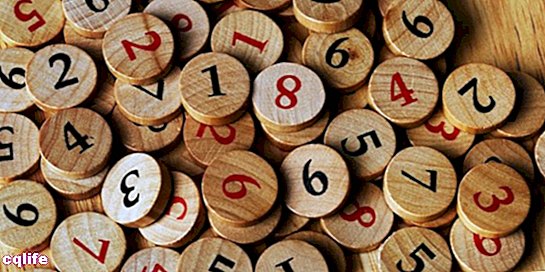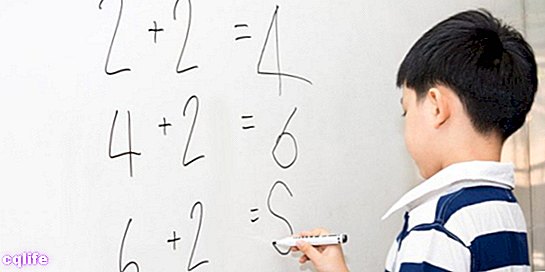We explain what integers are, the different properties they have and some examples of this numerical set.

What are whole numbers?
It is known as integers or simply integers when set numeric that contains all of the natural numbers, to its negative inverses and to zero. This numerical set is designated by the letter Z, from the German word zahlen ("numbers").
Whole numbers are represented on a number line, with zero in the middle and positive numbers (Z +) to the right and negative numbers (Z-) to the left, both sides extending to infinity. Normally negatives are transcribed with their sign (-), which is not necessary for positives, but can be done to highlight the difference.
In this way, the positive integers are larger to the right, while the negative ones are smaller and smaller as we move to the left. One can also speak of the absolute value of an integer (represented between bars | z |), which is equivalent to the distance between its location on the number line and zero, regardless of its sign: | 5 | is the absolute value of +5 or -5.
The incorporation of the integers to the natural numbers allows to enlarge the spectrum of quantifiable things, including negative figures that serve to keep track of absences or losses, or even for certain magnitudes such as temperature, which uses values above and below zero.
Properties of integers

Whole numbers can be added, subtracted, multiplied or divided just like natural numbers, but always obeying the rules that determine the resulting sign, as follows:
- Sum. To determine the sum of two integers, attention must be paid to their signs, as follows:
- If both are positive or one of the two is zero, simply add their absolute values and retain the positive sign. For example: 1 + 3 = 4.
- If both signs are negative or one of the two is zero, simply add their absolute values and keep the negative sign. For example: -1 + -1 = -2.
- If they have different signs, however, the absolute value of the smallest must be subtracted from that of the largest, and the sign of the largest will be preserved in the result. For example: -4 + 5 = 1.
- Subtraction. The subtraction of integers also attends to the sign, depending on which is greater and which is less in terms of absolute value, obeying the rule that two equal signs together become the opposite:
- Subtraction of two positive numbers with positive result: 10 – 5 = 5
- Subtraction of two positive numbers with resultnegative: 5 – 10 = -5
- Subtraction of two negative numbers with resultnegative: (-5) – (-2) = (-5) + 2 = -3
- Subtraction of two negative numbers with positive result: (-2) – (-3) = (-2) + 3 = 1
- Subtraction oftwo numbers of different sign and negative result: (-7) – (+6) = -13
- Subtraction oftwo numbers of different sign and resultpositive: – (-3) = 5.
- Multiplication. Integer multiplication is done by normally multiplying absolute values, and then applying the rule of signs, which states the following:
- More for more equals more. For example: (+2) x (+2) = (+4)
- More for less equals less. For example: (+2) x (-2) = (-4)
- Less for more equals less. For example: (-2) x (+2) = (-4)
- Less for less equals more. For example: (-2) x (-2) = (+4)
- Division. It works the same as multiplication. For example:
- (+10) / (-2) = (-5)
- (-10) / 2 = (-5)
- (-10) / (-2) = 5.
- 10 / 2 = 5.
Examples of whole numbers
Examples of whole numbers are any natural number: 1, 2, 3, 4, 5, 10, 125, 590, 1926, 76409, 9,483,920, along with each corresponding negative number: -1, -2, -3, - 4, -5, -10, -590, -1926, -76409, -9.483.920. This includes, of course, zero.
